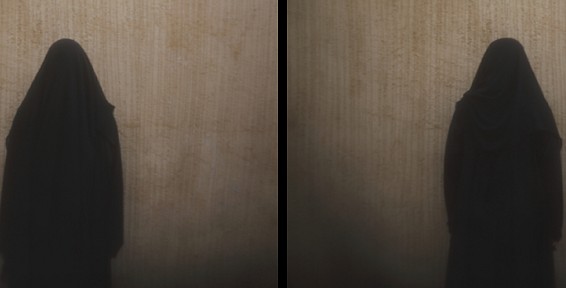Athr presents three solo exhibitions for emerging artists, which opens on the 2nd of November, 2014.
Faisal Almalki, Sara Abdu and Rami Alqthamy realize works that focus on self-exploration; works that have taken the artists into personal journeys that address their own identity, intangible emotions and even prejudices.
Faisal Almalki takes a literal approach in exploring the lives of Muslim women whom adorn the Hijab – a layer of cloth, or veil, that covers a woman completely -- essentially depleting her sight or vision of her surroundings. In his show titled Lone Canyon, the artist covers the lens of his camera to mimic a woman’s eye behind the veil. The work essentially allowed the artist to experience a day in the lives of veiled women. He explores the space between the woman’s face, and perhaps her own reality, and that of the veil that covers her. To the artist, the space, or canyon that divides them, is representational of an outlook from behind the veil to the world, and inevitably, an outlook of the outside world towards the veil and the woman behind it.
The project began as a way to understand the lives of women behind the veil: to gain perspective on who they were, and how they viewed the world and interacted with it. Inspired by a German biologist of the early 20th century named Jacob von Uexkull, whose theory was that anyone who wants to understand the life of a species must begin by considering their umwelt (OOM-velt); their subjective or “self-world”; the artist confronts a side of prejudice within himself towards a group of people from his own society that he knew nothing about.
The artist delves deeper into another layer of an overly perpetuated perception of Saudi culture as a whole. He captures images that represent the mundane, or presumed-trivial, yet easily recognizable for women living in Saudi: a bouquet of flowers that consist of both real and fake flower – which a veiled woman will not be able to differentiate - the inside of a confectionery shop, and iconic and historic buildings and landmarks; images that are now visibly blurred by the layer of cloth. The question perhaps lies within the difference between the perspective of the naked eye, and that of the veiled.
Sara Abdu’s work uses an ‘Ugly/Beautiful’ approach that is thematic in all her work. The philosophy she applies to her work essentially challenges the notion of what is perceived as “beautiful” or lack there of. Although her characters evoke a heavy sense of melancholy and deliberate irony, they also articulate on a multitude of issues both personal and social in her journey of self-exploration and discovery.
In her first solo show titled The Intangible Bonds In Our Existence, Sara realizes the bonds that exist between humans and their surroundings; bonds that link any human to their emotions, realities and dreams; bonds that play an integral role that shape and affect us. She realizes these bonds as a co-existent consciousness within our own existence.
Ramy Alqthami revisits ‘Al Bitra’- the concrete block which was given to his family at random by the leaders of his tribe in Taif that bordered his land; a numbered block that easily identified this land as his. In his journey to remove the ‘Bitra’, the artist explores the notion of borders and identity. In his simple video of its removal, he reexamines the ‘Bitra’ as a representation of an economical, sociopolitical phenomenon that has consumed the state of humans. He poses the removal of a tangible concrete object with the removal of a metaphorical notion of borders and identity. Perhaps it is a simple and almost child-like act that could sweep away or replace the meaning of borders and identity in this world, or perhaps it documents (to him) the traumatic act of stripping away his identity and his borders, if one were to conform to the "conventional" notion of identity and borders.




